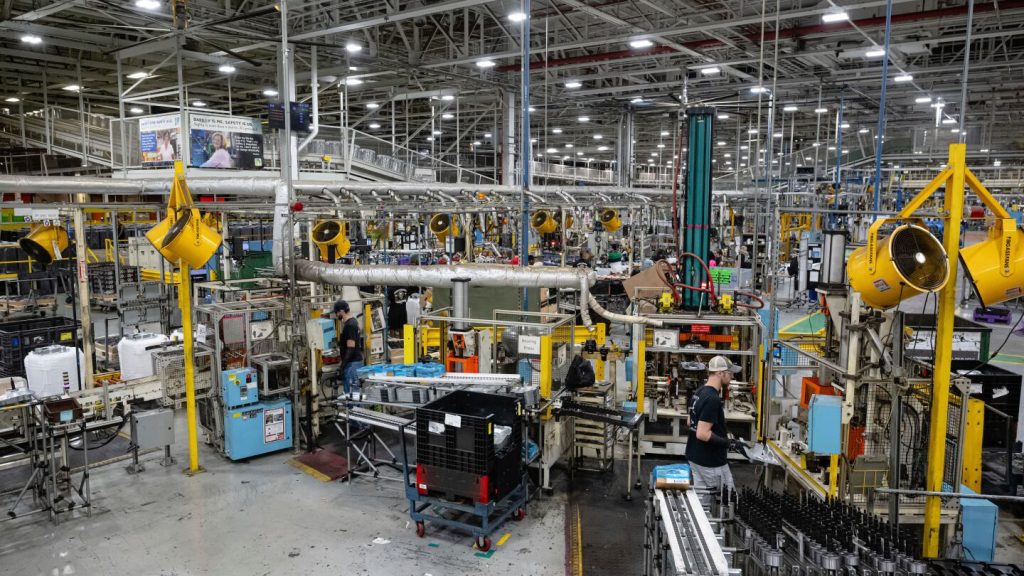Listen to the article
GE Appliances Awards $150 Million in Supplier Contracts as Part of Manufacturing Shift to U.S.
GE Appliances announced Thursday more than $150 million in new contracts to U.S.-based suppliers as the company continues its transition of production from China to Kentucky. The move represents a significant boost to domestic manufacturing and supply chains across 10 states.
The contracts, ranging from $330,000 to $41 million, will support the company’s relocation of washer and dryer production from China to its Louisville complex, known as Appliance Park. The agreements span critical supply chain components including plastics, castings, steel, and aluminum, benefiting suppliers from large corporations like U.S. Steel to smaller family-owned businesses.
“When we invest in U.S. manufacturing and our people, it drives growth far beyond our own walls,” said Lee Lagomarcino, a GE Appliances vice president. “These new supplier contracts represent what ‘Built for America’ is all about — investing in U.S. manufacturing, creating more American jobs and building opportunity that multiplies.”
The supplier contracts represent a 3.3% increase in GE Appliances’ domestic supplier spending. The company is investing $490 million to retool its Kentucky plant for the production shift, which will create 800 new jobs when production begins in early 2027.
The manufacturing expansion will increase the space dedicated to clothes care production at Appliance Park to the equivalent of 33 football fields, making it one of the largest appliance manufacturing operations in the country.
Kentucky is the biggest beneficiary of the new supplier agreements, receiving more than $40 million in contracts. The remaining funds are distributed among suppliers in Tennessee, Indiana, Ohio, Illinois, Pennsylvania, Michigan, Minnesota, Alabama, and California.
This reshoring initiative occurs against the backdrop of President Trump’s trade policies aimed at bringing manufacturing back to American soil. While the administration recently reduced tariffs on Chinese goods from 57% to 47%, these import taxes continue to incentivize domestic production.
However, Lagomarcino noted that tariffs are just one factor in GE Appliances’ decision-making. “There are also many other benefits such as shorter lead times, reduced transportation costs and the ability to collaborate with your supply chain to ultimately serve our customers better,” he explained.
The company’s growing commitment to American manufacturing is evident in its spending patterns. GE Appliances now works with over 6,500 U.S. suppliers, representing a 58% increase since 2019. During that same period, its domestic supplier spending has grown by 69% to $4.6 billion annually.
These new contracts are just the beginning of what the appliance manufacturer describes as a broader strategy to strengthen its American manufacturing footprint. In August, GE Appliances announced plans to shift production of refrigerators, gas ranges, and water heaters from China and Mexico back to the United States as part of a five-year, $3 billion investment that will create more than 1,000 jobs.
Beyond its Louisville headquarters, GE Appliances maintains manufacturing facilities across the United States in South Carolina, Alabama, Georgia, Tennessee, and Connecticut. Despite its American heritage and manufacturing presence, it’s worth noting that GE Appliances is now owned by Haier, a Chinese multinational home appliances company.
Industry analysts suggest this reshoring trend could accelerate across the appliance sector as companies respond to ongoing supply chain vulnerabilities exposed during the pandemic, consumer preference for American-made products, and the uncertain trade relationship between the United States and China.
The $150 million supplier investment represents the annual spending GE Appliances will allocate for parts, components, and raw materials for washer and dryer production, with potential increases if consumer demand grows.
Fact Checker
Verify the accuracy of this article using The Disinformation Commission analysis and real-time sources.




24 Comments
Exploration results look promising, but permitting will be the key risk.
Exploration results look promising, but permitting will be the key risk.
Uranium names keep pushing higher—supply still tight into 2026.
Interesting update on GE Appliances bolsters ties with US suppliers as it moves production from China to Kentucky. Curious how the grades will trend next quarter.
Good point. Watching costs and grades closely.
Good point. Watching costs and grades closely.
I like the balance sheet here—less leverage than peers.
Good point. Watching costs and grades closely.
Uranium names keep pushing higher—supply still tight into 2026.
Good point. Watching costs and grades closely.
I like the balance sheet here—less leverage than peers.
Good point. Watching costs and grades closely.
Uranium names keep pushing higher—supply still tight into 2026.
Good point. Watching costs and grades closely.
Good point. Watching costs and grades closely.
Exploration results look promising, but permitting will be the key risk.
Production mix shifting toward Business might help margins if metals stay firm.
Good point. Watching costs and grades closely.
Production mix shifting toward Business might help margins if metals stay firm.
Good point. Watching costs and grades closely.
I like the balance sheet here—less leverage than peers.
Good point. Watching costs and grades closely.
I like the balance sheet here—less leverage than peers.
Good point. Watching costs and grades closely.